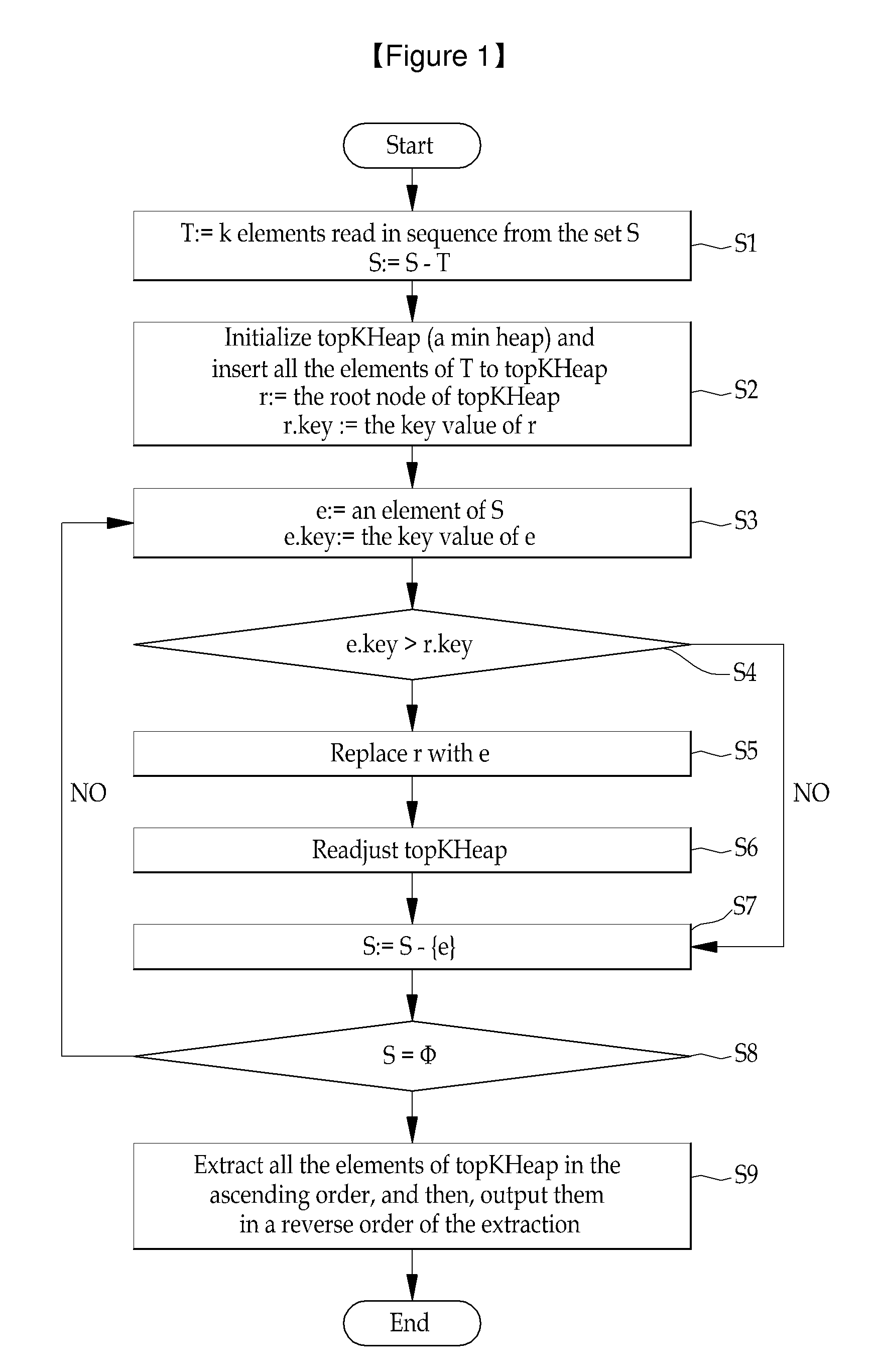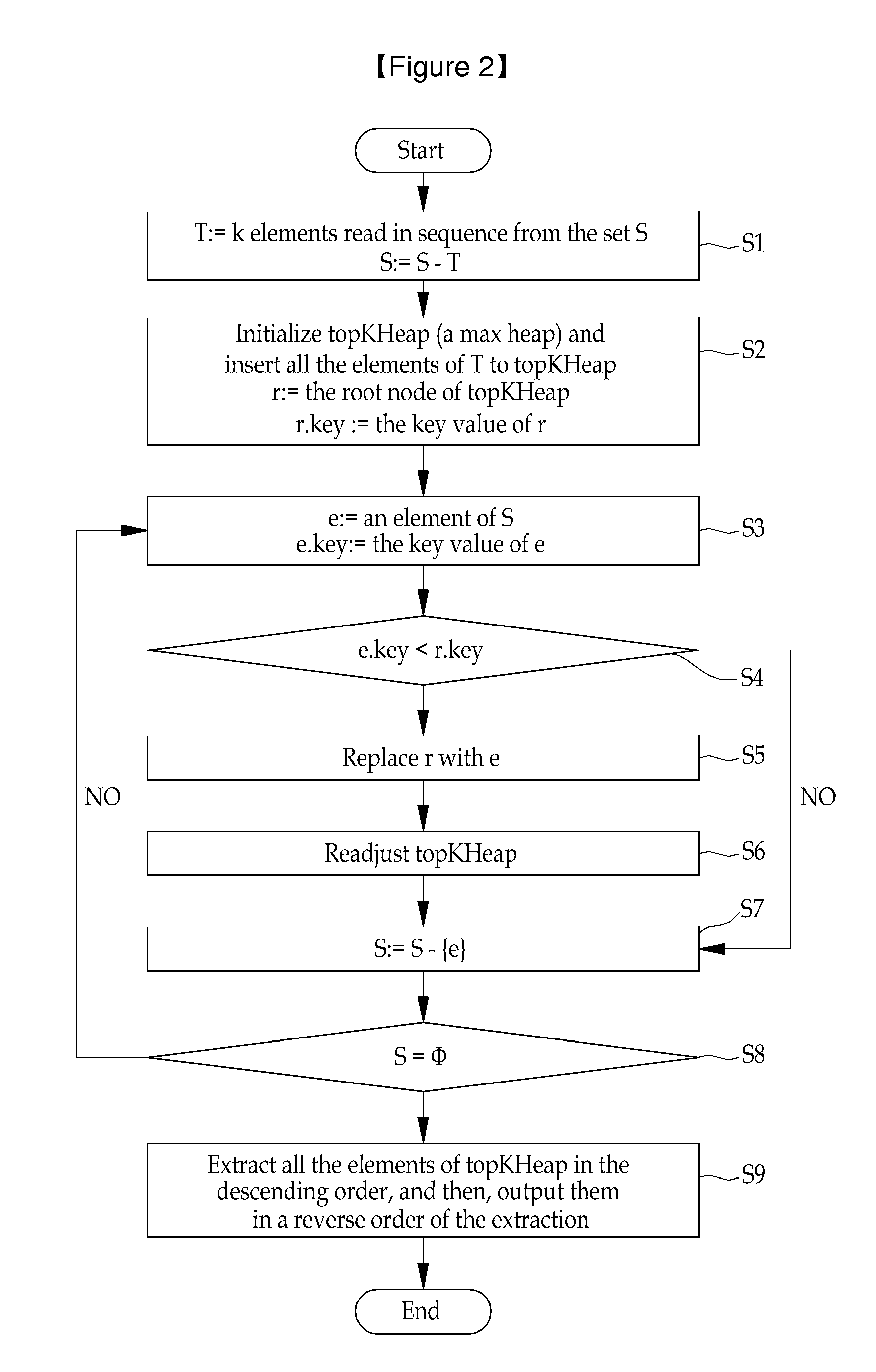Linear-time top-k sort method
a top-k sorting and linear time technology, applied in the field of linear time top-k sorting, to achieve the effect of enhancing the performance of those systems and drastically reducing the storage space for maintaining top-k results
- Summary
- Abstract
- Description
- Claims
- Application Information
AI Technical Summary
Benefits of technology
Problems solved by technology
Method used
Image
Examples
Embodiment Construction
[0040]Features and advantages of the present invention will be more clearly understood by the following detailed description of the present preferred embodiments by reference to the accompanying drawings. It is first noted that terms or words used herein should be construed as meanings or concepts corresponding with the technical spirit of the present invention, based on the principle that the inventors can appropriately define the concepts of the terms to best describe their own invention. Also, it should be understood that detailed descriptions of well-known functions and structures related to the present invention will be omitted so as not to unnecessarily obscure the important point of the present invention.
[0041]Throughout the description, the importance or weight of a data element is represented by its value or by the result of a user-specified or system-specified function. Without loss of generality, we regard the key value of a data element as its importance. Accordingly, to...
PUM
 Login to View More
Login to View More Abstract
Description
Claims
Application Information
 Login to View More
Login to View More - R&D
- Intellectual Property
- Life Sciences
- Materials
- Tech Scout
- Unparalleled Data Quality
- Higher Quality Content
- 60% Fewer Hallucinations
Browse by: Latest US Patents, China's latest patents, Technical Efficacy Thesaurus, Application Domain, Technology Topic, Popular Technical Reports.
© 2025 PatSnap. All rights reserved.Legal|Privacy policy|Modern Slavery Act Transparency Statement|Sitemap|About US| Contact US: help@patsnap.com



